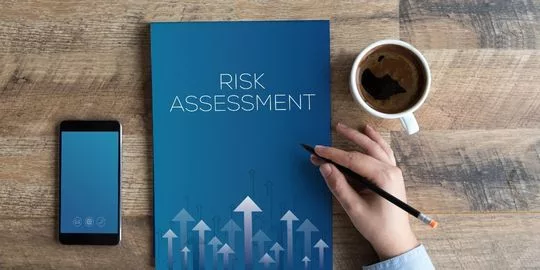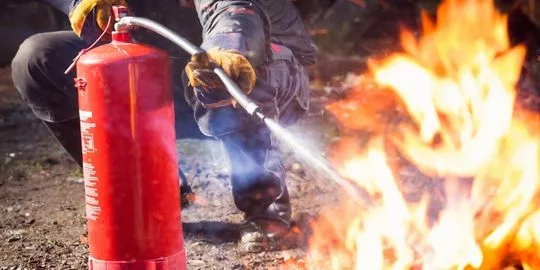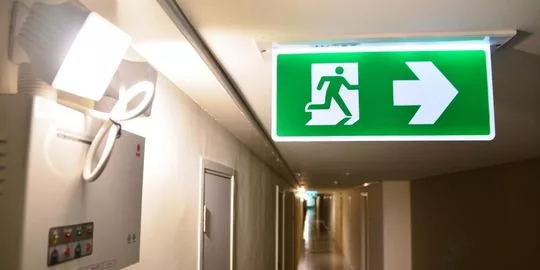Emergency lighting will play a vital role in the safety of your employees when evacuating a building. On a daily basis, we work within buildings with varying levels of fire risk. A number of combustibles can be located within an office building including heaters, electrical equipment, paper, cloth and various other sources of fuel. In addition, many job roles will accompany fire safety risks. These risks will in turn require additional fire safety precautions.
Fires cause panic which leads to hazardous situations and loss of life. Additionally, a fire can cause a loss of electrical power. In the event of a power outage, we will experience very limited lighting making safe evacuation extremely difficult. When this occurs, you have to be prepared with additional fire safety precautions such as emergency lighting. Emergency lighting and lit signage will provide a safer evacuation from the premises.
Equally, there is no one size fits all approach to understanding what constitutes an emergency light. Although there are certainly some general guidelines that apply across the board. Emergency lighting is now an important part of any business. Let’s learn more about why emergency lighting is important.
Need A Fire Safety Risk Assessment?
What is Emergency Lighting?
Emergency lighting must be part of any company building fire safety evacuation plan. This battery-powered lighting is activated in the event of an emergency situation, such as a fire or power outage. Emergency lighting will provide enough illumination to keep employees safe when power outages occur. Once activated, emergency lighting allows for a quicker and safer evacuation from the building.
The purpose of emergency lighting is to provide an independent source of illumination. Unlike common premises lighting, this will only activate when there is a loss of power, rather than the traditional light switch. Regardless of how long the power is out, emergency lighting ensures that you are able to evacuate from a building safely. Without having to panic whilst attempting to use torches or candles.
We cannot stress the importance of emergency lighting. Although we recommend this system in all commercial premises, it is especially popular where power outages are more frequent. A safe, reliable source of illumination allows your employees, residents, visitors or occupants to safely exit the building. Emergency responders can then begin to access the area with minimal risk.
In Need Of A Fire Safety PEEP?
Testing Your Emergency Lighting (Monthly/Annual)
When you install emergency lighting in your facility, you need to make sure that it is tested regularly and maintained properly. In accordance with British Standards BS EN 50172:2004, all emergency lighting should be tested monthly. Typically, this consists of a short but functional luminaire test to ensure the lamps and battery are working correctly.
In addition to regular monthly testing, a more rigorous annual emergency lighting test is required. This test should be a ‘full rated duration test’ where the luminaire is tested for the full duration of its expected battery life. For example, if your emergency lighting is expected to last 3 hours, the test will last the full 3 hours and the emergency lighting must remain lit for the full duration.
Exiting and Entering Your Premises In An Emergency
We must be able to provide sufficient illumination at all times. This is especially important when ensuring that people can exit a building safely during an emergency or when normal lighting would otherwise not be available. In order to ensure that our lights are suitable for this, we have to make sure that their lumen output is sufficient for the task. We also need to make sure that the emergency light has a suitable lifespan so that it can be relied upon by our customers. Even if it’s only used in an emergency, they still need to know that there is no chance of them failing during this time.
Occupants Exiting The Premises
In the event of a fire, you must be able to evacuate your premises safely. To ensure that this is possible, as mentioned above, we recommend that you test your emergency lighting regularly. We also recommend that you have an evacuation plan in place which outlines what actions need to take place if there is an emergency. This plan should take into account the layout of your building and the number of people who are likely to be present during an emergency. It should also include any fire exits or other escape routes which may be available.
The plan should be communicated to all employees, and it should be reviewed with them on a regular basis. If you have any concerns about the safety of your premises or your staff, we recommend that you contact a qualified fire safety specialist to help you.
Emergency Responders Entering The Premises
We must also provide sufficient illumination so first responders such as police officers or firefighters can enter damaged buildings without putting themselves at undue risk. The emergency responders will need sufficient light to see where they are going and ensure that they do not put themselves at unnecessary risk of injury.
If you are trying to find a suitable light for your premises, we recommend that you contact, OHEAP Fire & Security, for your emergency lighting. We will be able to advise you on the most appropriate type of light based on your specific needs.
Regulatory Reform (Fire Safety) Order 2005
The Regulatory Reform (Fire Safety) Order 2005, which came into force in October 2006, requires the ‘responsible person’ to ensure that all staff have been trained on fire safety.
In the case of failure of your normal lighting, emergency routes and exits must be illuminated with a backup source adequate to provide illumination. The legal requirement is that non-domestic buildings, such as hospitals and hotels, must be safe at all times. Therefore they usually have emergency lighting fitted in case of a power failure.
Finally, many jurisdictions require specific types of lamping (lamps) depending on how long they need to run before being shut off automatically after an extended period (this prevents damage from occurring over time).

Why is Emergency Lighting Important?
Evacuate from a Building During an Emergency
Emergency lighting is important for any safety plan. In the event of a power failure, emergency lighting works as an independent light source and can help guide you out of the building.
To maximise visibility, lights are usually installed at regular intervals along corridors and stairwells. This ensures people can find their way in the dark. Emergency lights come in both portable and fixed varieties, but they all have one thing in common. They’re designed to be used during emergency situations!
Some systems also include exit signs which indicate where doors lead outside or into other areas within buildings. This can be extremely helpful if someone needs clarification about where they are located during an evacuation procedure.
Without Emergency Lighting, Evacuation isn’t Guaranteed
The importance of emergency lighting is often overlooked. Without it, evacuating the building could be a risky undertaking. If there is no light in any area of your workplace, you and your coworkers may not be able to move around safely. Especially if someone else needs assistance.
If there is an unexpected power failure in your building during an emergency situation (such as a fire), it’s important that everyone has access to functioning lighting. We need to be able to see where we are going while escaping to safety.
Emergency Lighting Statistics And Information
- Customers typically pay £115 per emergency light, per year for testing.
- Testing must be carried out by a qualified electrician.
- Testing is carried out to meet The Regulatory Reform (Fire Safety) Order 2005.
- The minimum duration of emergency escape lighting is 3 hours.
- The emergency lighting market is worth $7.9 billion in the US.
- Emergency lighting is a battery-backed lighting device.
- Fire can interfere with the flow of power across the building.
- In the UK, roughly 22,000 fires will occur each year in commercial premises.
- In the UK, roughly 430 fires will occur each week in commercial premises.
- Escape routes should have emergency lighting with a minimum of 1 Lux.
- Open areas should have emergency lighting with a minimum of 0.5 Lux.
- High-risk task areas should have emergency lighting with a minimum of 15 Lux.
- The emergency lighting market is expected to grow by 7% before 2030 in the UK and US.
- APAC is the fastest-growing region in the emergency lighting market
Emergency lighting is an important aspect of any building. It helps to ensure the safety of occupants and visitors in case of an emergency, such as a fire or power outage. Emergency lights are used to illuminate escape routes and high-risk task areas that require regular inspection by maintenance workers during routine inspections.
The information above is just a brief overview of the emergency lighting market. To learn more about the current trends and opportunities, get in touch with one of our specialists today!
Essential To Any Fire Safety Plan
Without emergency lighting, evacuation can be a risky and dangerous activity. The use of emergency lighting is an essential part of any safety plan. Emergency lighting is also an important part of any building’s fire protection system. It ensures that everyone in the building can safely exit without worrying about walking into a dark hallway or stairwell. Emergency lights are designed to be highly visible and easily accessible, making them a reliable source of light when you need them most. They’re also designed to be easy to install and maintain. Emergency lights are usually powered by batteries, making them a reliable source of light during power outages. They can also be wired directly into an electrical system.
Emergency lighting is designed to help you evacuate from a building during an emergency. It can prevent fatalities and injuries that might occur due to poor visibility caused by smoke or darkness in the event of fire, power failure or other emergencies.

How Does Emergency Lighting Work?
Emergency lighting is a complete system of independent lights that will illuminate in the event of a power failure. These systems are designed to provide illumination and assist in evacuation from buildings. They work by providing light sources that are independent of the main power supply, so if there’s ever an issue with your building’s utility grid or wiring, emergency lighting will still be available to help you get out safely.
Emergency lighting is different from exit signs because it works independently of the main electrical system. Exit signs, generally, are connected directly to the building’s power source and only illuminate when there’s electricity running through them. If there’s an outage, they won’t work at all. Emergency systems can be set up so they won’t rely on any one piece of equipment, if something fails in one part of your emergency system, another part will take over without fail.
Conclusion
Emergency lighting is vitally important for any business. This is just as important as any other fire safety system. Emergency lighting is there to help you find your way when evacuating in case of a power outage, it can really save your life. Emergency lighting is one of the most important elements in any building. It’s not just a matter of convenience; it’s essential for your safety and security.
Additionally, you need to think about how you want your emergency lighting to work and what kind of system will best suit your needs. You also need to make sure that it’s properly maintained so that it’s always ready for use when it’s needed most.
In this article, we’ve discussed the benefits of emergency lighting and how it can help you when there’s an electrical outage. We’ve also looked at some of the common types of emergency lighting, as well as different situations where they might be used. If you want to learn more about emergency lighting or need assistance with choosing or installing a system for your building, please feel free to contact us today!
The information we have provided above can help you decide if this type of light is right for you and your business.
